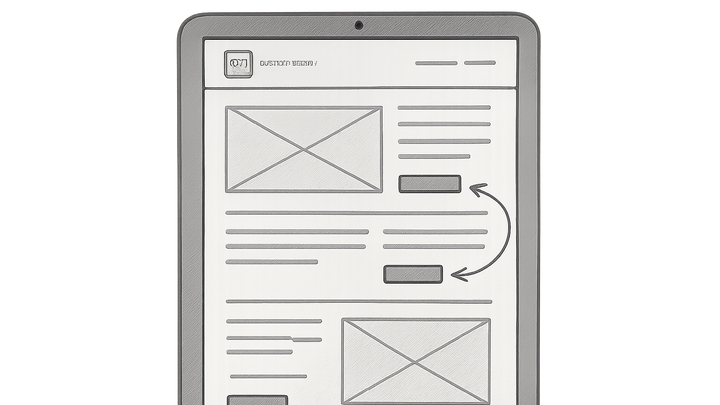Published on 2025-06-29T19:52:35Z
What Is a Wireframe? Examples & Importance in CRO, UX, and SEO
Wireframes are simplified, blueprint-like representations of web pages that outline the placement of content, navigation, and interactive elements without focusing on visual design details. They serve as the foundation for designing and refining a website’s user experience, enabling teams to iterate quickly on layout, content hierarchy, and conversion paths. In CRO (Conversion Rate Optimization), wireframes help identify optimal locations for calls to action, lead capture forms, and persuasive content. From a UX (User Experience) standpoint, they clarify user flows, reduce cognitive load, and support usability testing early in the design process. SEO (Search Engine Optimization) benefits from wireframes by ensuring logical content organization, proper use of headings, and strategic placement of keyword-rich areas. Leveraging SaaS tools like PreVue.me, teams can receive actionable critiques on wireframe iterations—covering CRO, lead generation, SEO, UX, and accessibility—to drive data-informed decisions and maximize project success. By investing time in wireframing, organizations align stakeholders, streamline development, and set a clear roadmap for high-fidelity design and implementation.
Wireframe
A wireframe is a skeletal blueprint of a webpage’s layout used to plan content, user flow, and conversion paths in CRO, UX, and SEO.
Why Wireframes Matter in CRO, UX, and SEO
This section explains the core purpose of wireframes and how they contribute to effective conversion rate optimization, user experience design, and search engine optimization.
-
Clarify layout and structure
Wireframes define the placement of navigation, content, and interactive elements, creating a blueprint that guides designers and developers.
-
Optimize conversion paths
By mapping calls-to-action and lead capture forms, wireframes help identify and refine the most efficient routes for user conversions.
-
Enhance collaboration and feedback
They provide a neutral, visual tool for stakeholders to comment and align on functionality before high-fidelity design begins.
Types of Wireframes
Wireframes vary in fidelity based on the project stage and desired level of detail, from quick sketches to detailed digital layouts.
-
Low-fidelity wireframes
Simple hand-drawn or digital sketches focusing on broad layout without detailed design elements.
-
Mid-fidelity wireframes
Basic digital wireframes that include placeholders for images, text, and simple annotations but lack final design aesthetics.
-
High-fidelity wireframes
Detailed digital blueprints that closely resemble the final product in terms of layout, spacing, and sometimes typography.
Best Practices for Effective Wireframes
Follow these guidelines to ensure your wireframes effectively communicate structure, functionality, and conversion goals.
-
Adopt a user-centered approach
Base wireframes on user research and personas to ensure the layout meets real user needs and pain points.
-
Keep it simple
Avoid visual clutter; focus on the core elements that drive user action and content hierarchy.
-
Annotate and document
Include notes on functionality, interaction behaviors, and content requirements to guide design and development teams.
-
Iterate rapidly
Use quick revisions and feedback loops to refine the wireframe before moving to high-fidelity designs.
Applying PreVue.me for Actionable Wireframe Critiques
Leverage the PreVue.me SaaS platform to enhance your wireframe process with data-driven feedback on CRO, SEO, UX, lead generation, and accessibility.
-
Cro and lead generation critiques
PreVue.me analyzes CTA placement, button size, form complexity, and content hierarchy to suggest optimizations that increase conversions and lead capture.
-
Seo structure feedback
The tool evaluates heading structure, content layout, and keyword placement to recommend improvements for search engine visibility.
-
Ux and usability analysis
It assesses navigation flow, interactive element placement, and user journey mapping to enhance ease of use and satisfaction.
-
Accessibility recommendations
PreVue.me checks contrast ratios, semantic structure, and ARIA roles to ensure your wireframes meet accessibility standards.
